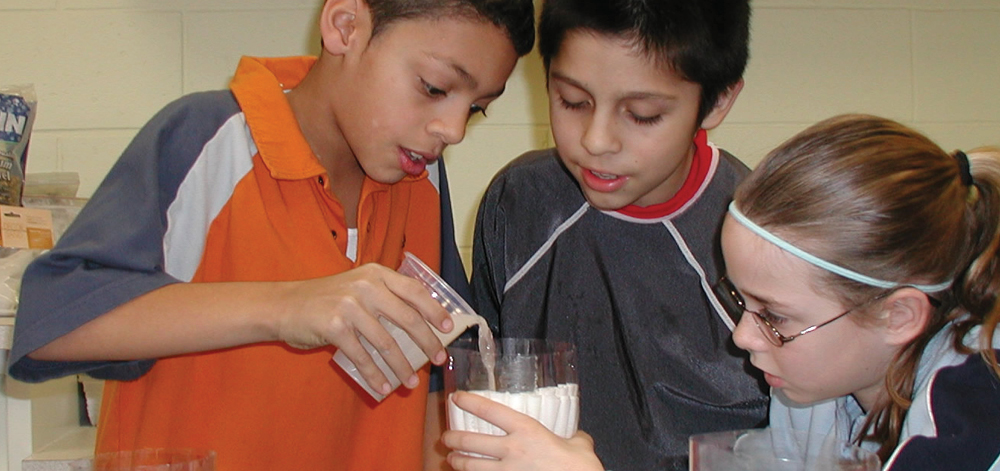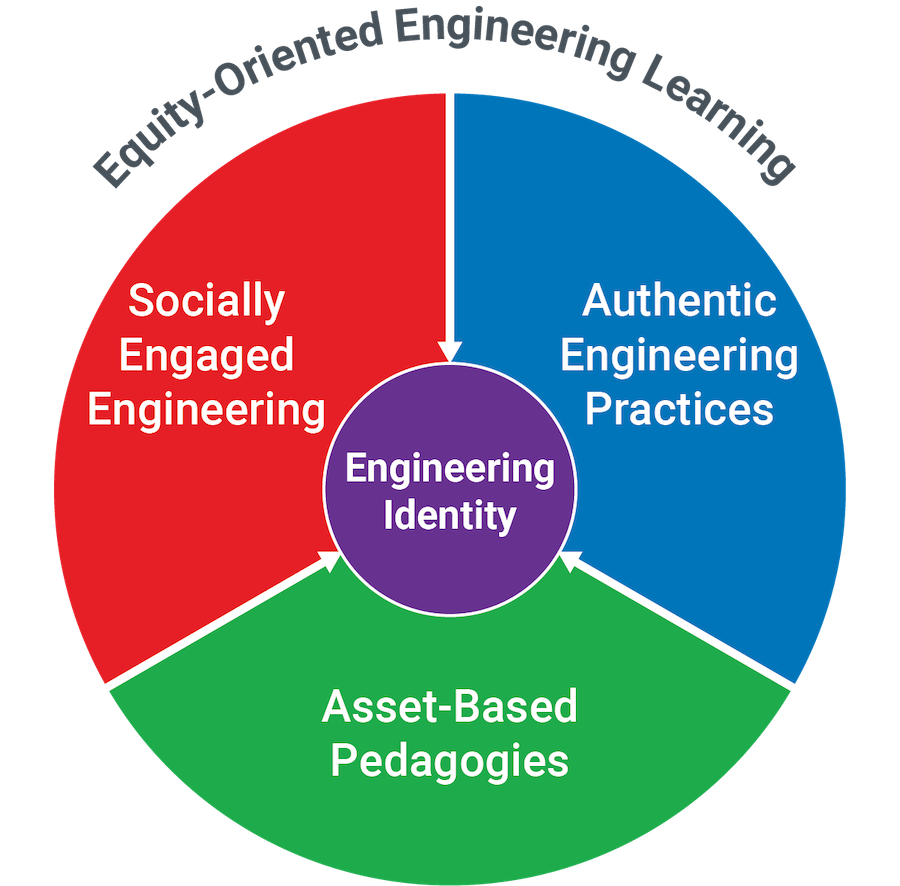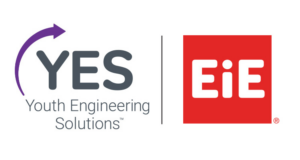
Equity-Oriented Engineering
Equity-Oriented Engineering
Developing equitable educational materials is an intentional process. Three decades of research and development by the YES team inform our model for equity-oriented engineering learning.
Students address problems that are relevant to their lives and communities. They tap their strengths and experiences, think creatively, engage in engineering practices, use multiple modes of communication, and collaborate with peers as they create original designs. By doing and learning engineering, students build an engineering identity.

A set of design principles anchor our curricular materials.
| Dimension | Design Principles for Equity | Student Activity |
|---|---|---|
| Socially Engaged Engineering | Situate the problem in a societal context | Students engage in real-world engineering challenges that expand their horizons while connecting to their homes, communities, and cultures. Activities begin with narratives that demonstrate how engineers shape our world by solving problems. |
| Consider the impacts of the problem on different individuals, groups, or systems | Students consider who is most affected by the problem and how. They use this knowledge to make design decisions. | |
| Think critically about the impact of engineered solutions | Students identify consequences, positive and negative, of engineered solutions. They consider the potential impacts of the technologies they design. | |
| Authentic Engineering Practices | Engage in engineering practices | Students engage in ways of doing engineering, including designing, building, analyzing, testing, and sharing new technologies. Active engagement builds students’ knowledge of engineering and science, provides them opportunities to learn from doing and working with other students, and fosters a sense of accomplishment. |
| Ensure that design challenges have multiple solutions | Students draw on their experiences and strengths and celebrate creative, innovative thinking. Challenges are carefully designed so many solutions are possible. Recognizing that an array of possible solutions exists encourages students to consider diverse approaches and evaluate how and for whom specific solutions work best. | |
| Scaffold persistence, risk-taking, and productive failure | Students embrace the important role of failure and iteration in engineering. Activities model how to persist through and learn from unsuccessful attempts—a mindset that needs to be taught and cultivated. | |
| Cultivate collaboration and teamwork | Students engineer in teams. By sharing ideas, data, and designs in small groups and class discussions, students benefit and learn from each other. Students also learn vital collaboration and negotiation skills. Interactive, collaborative environments can be more inviting for many students than those rooted in competition. | |
| Asset-Based Pedagogies | Leverage prior knowledge and experiences | Students explore family connections to the engineering problem that are relevant to their everyday lives. They draw upon their prior knowledge and leverage their personal experiences to design solutions. |
| Develop familiarity with materials, tasks, and terminology | Students of all ages and ability levels participate in scaffolding activities that develop necessary knowledge, skills, and tools. Previous familiarity with materials, tasks, or terminology is not assumed. | |
| Create multimodal, flexible activities | Students interpret content and express their understandings in a variety of ways. These span listening, speaking, demonstrating, writing, and drawing. | |
| Engineering Identity | Use low-cost, readily available materials | Students use inexpensive, common materials to build the technologies. Because these materials are affordable and available, learners can continue their engineering explorations at home. |
| Provide role models with diverse demographic characteristics | Students learn from diverse role models in context-setting narratives, videos, and their community. Each unit introduces role models who reflect the diversity of individuals involved in engineering. | |
| Nurture engineering identities and mindset | Students develop interest, knowledge, abilities, and identities by engaging in authentic engineering practices from a young age. These early, successful experiences build students’ confidence in and affiliation with engineering and encourage a problem-solving mindset. |
Download the PDF.
